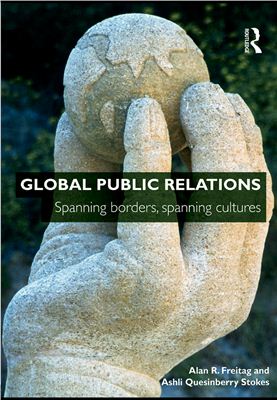Издательство Taylor & Francis Group, 2009, -329 pp.
This innovative text provides a structured and practical framework for understanding the complexities of contemporary public relations. It is an instructional book that guides the reader through the challenges of communication and problem-solving across a range of organizations and crosscultural settings.
Written in a straightforward, lively style, the book covers:
- foundational theories, and factors that shape the discipline;
- communication across cultures;
- trends affecting the public relations profession throughout the world.
Incorporating case studies and commentary to illustrate key principles and stimulate discussion, the book also highlights the different approaches professionals must consider in different contexts, from communicating with employees to liaising with exteal bodies such as govement agencies or the media.
Offering a truly global perspective on the subject, Global Public Relations is essential reading for any student or practitioner interested in public relations excellence in a global setting.
The young discipline of public relations has given birth to an infant subdiscipline: inteational PR. This book bears witness to the fact that the infant, while still striving for maturity, has at least reached early adolescence.
The book is at least the fourth – all published since 1996 – that seeks to define and explain public relations worldwide. The first two were written by and for scholars and research-oriented graduate students. The authors and editors sought to describe the practice in varied nations and regions. Also, they tried to articulate the cultural, political, social and economic forces that have shaped it in ways that might later be disseminated more widely (Culbertson and Chen 1996; Srisamesh and Vergig 2003).
This volume defines public relations practice in a readable way for a larger audience – graduate and advanced undergraduate students, and practitioners gearing up to work in and with societies other than their own. The authors are experienced executive-level practitioners tued academics. They present a balanced, comprehensive look at the scholarly literature that helps shape inteational public relations in 2008, and they do so with a lively text.
Part 1
Common ground
Evolution of the profession
Theories and methods
Part 2
Comparative cultural metrics
Structural comparisons
The state of the public relations profession
Part 3
South and Southeast Asia
Evolutionary public relations in China, Japan and South Korea
The Middle East
Public relations in sub-Saharan Africa
Latin America
Central and Easte Europe
Weste Europe and legacy countries
A look to the future
This innovative text provides a structured and practical framework for understanding the complexities of contemporary public relations. It is an instructional book that guides the reader through the challenges of communication and problem-solving across a range of organizations and crosscultural settings.
Written in a straightforward, lively style, the book covers:
- foundational theories, and factors that shape the discipline;
- communication across cultures;
- trends affecting the public relations profession throughout the world.
Incorporating case studies and commentary to illustrate key principles and stimulate discussion, the book also highlights the different approaches professionals must consider in different contexts, from communicating with employees to liaising with exteal bodies such as govement agencies or the media.
Offering a truly global perspective on the subject, Global Public Relations is essential reading for any student or practitioner interested in public relations excellence in a global setting.
The young discipline of public relations has given birth to an infant subdiscipline: inteational PR. This book bears witness to the fact that the infant, while still striving for maturity, has at least reached early adolescence.
The book is at least the fourth – all published since 1996 – that seeks to define and explain public relations worldwide. The first two were written by and for scholars and research-oriented graduate students. The authors and editors sought to describe the practice in varied nations and regions. Also, they tried to articulate the cultural, political, social and economic forces that have shaped it in ways that might later be disseminated more widely (Culbertson and Chen 1996; Srisamesh and Vergig 2003).
This volume defines public relations practice in a readable way for a larger audience – graduate and advanced undergraduate students, and practitioners gearing up to work in and with societies other than their own. The authors are experienced executive-level practitioners tued academics. They present a balanced, comprehensive look at the scholarly literature that helps shape inteational public relations in 2008, and they do so with a lively text.
Part 1
Common ground
Evolution of the profession
Theories and methods
Part 2
Comparative cultural metrics
Structural comparisons
The state of the public relations profession
Part 3
South and Southeast Asia
Evolutionary public relations in China, Japan and South Korea
The Middle East
Public relations in sub-Saharan Africa
Latin America
Central and Easte Europe
Weste Europe and legacy countries
A look to the future

